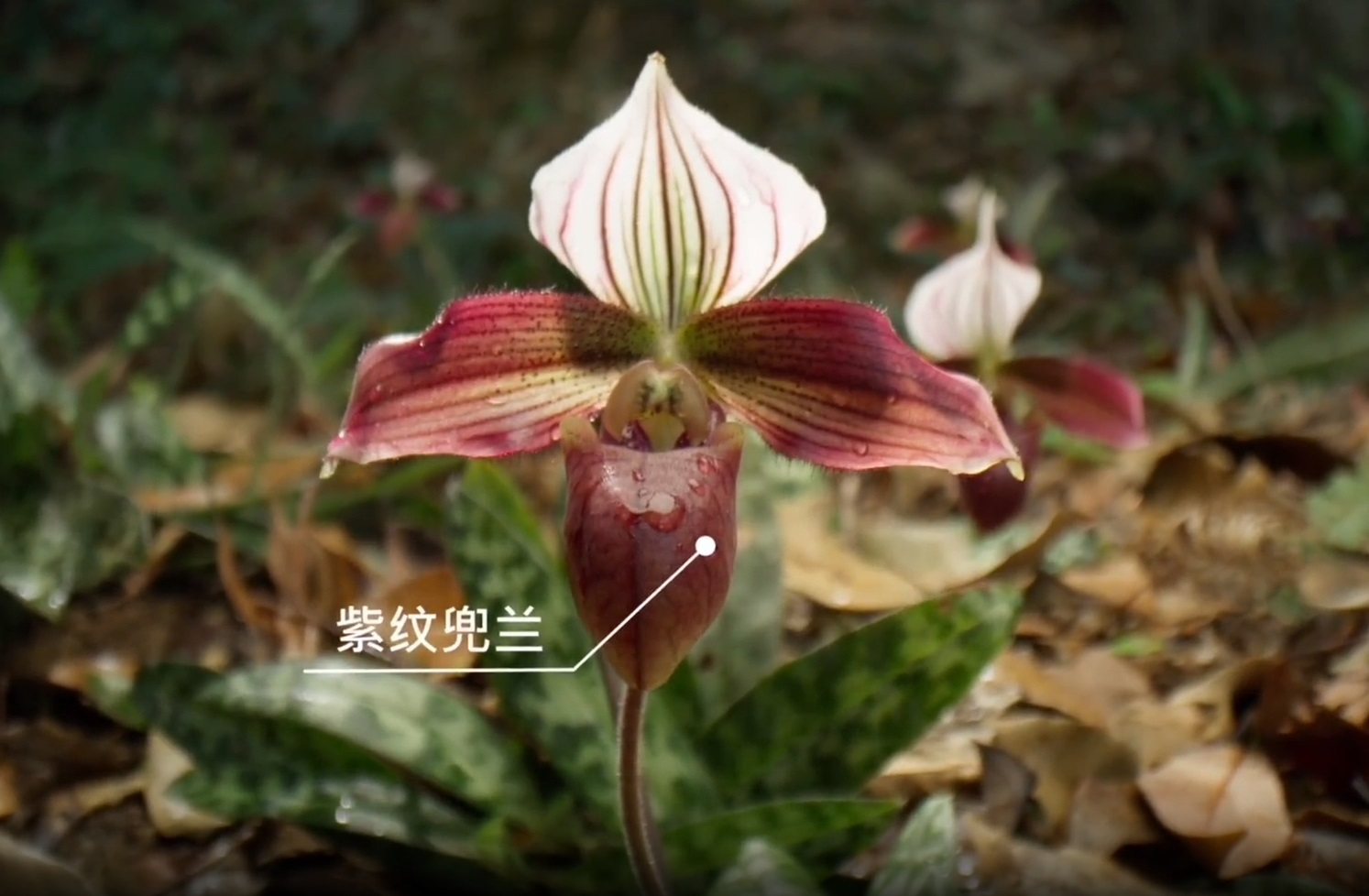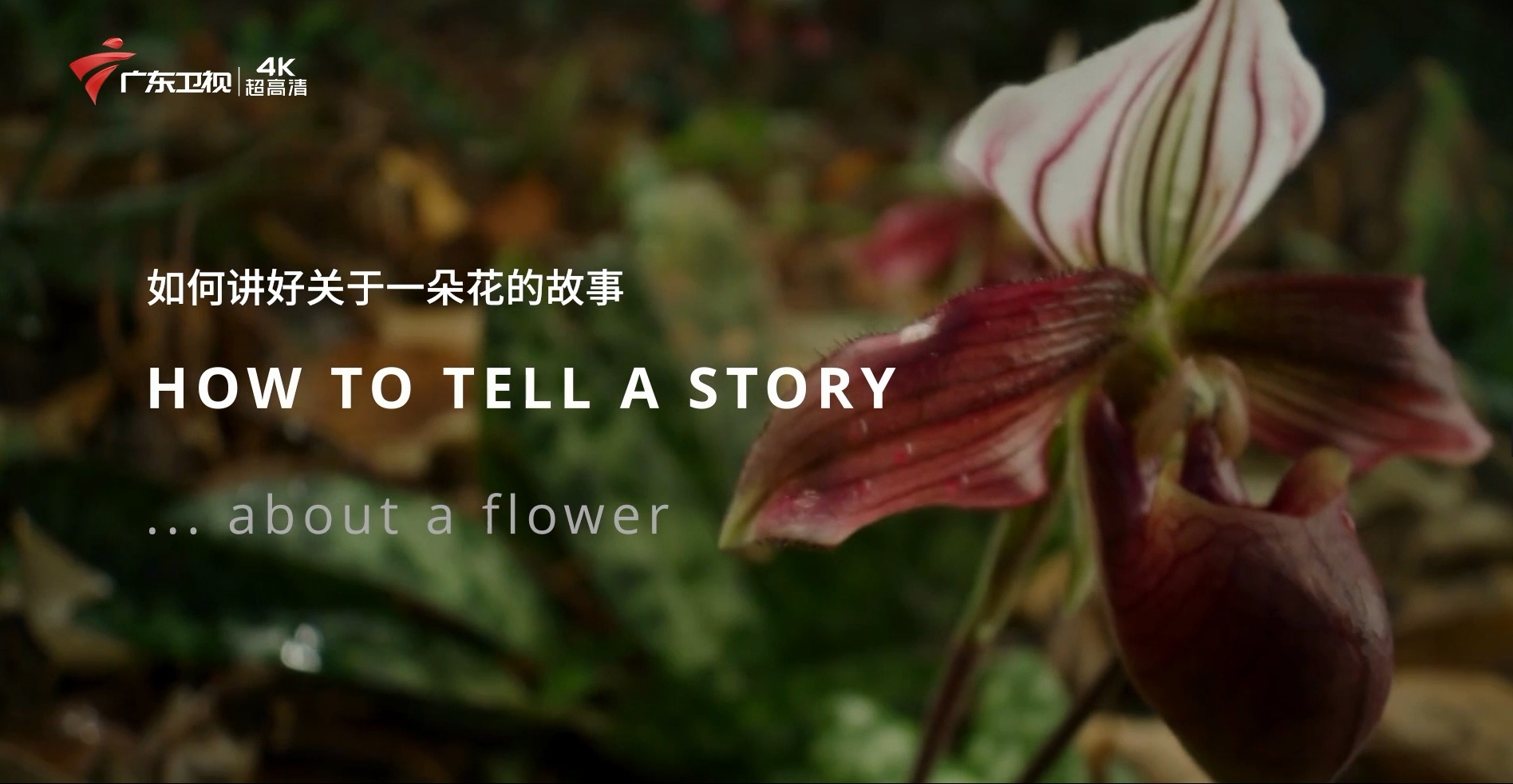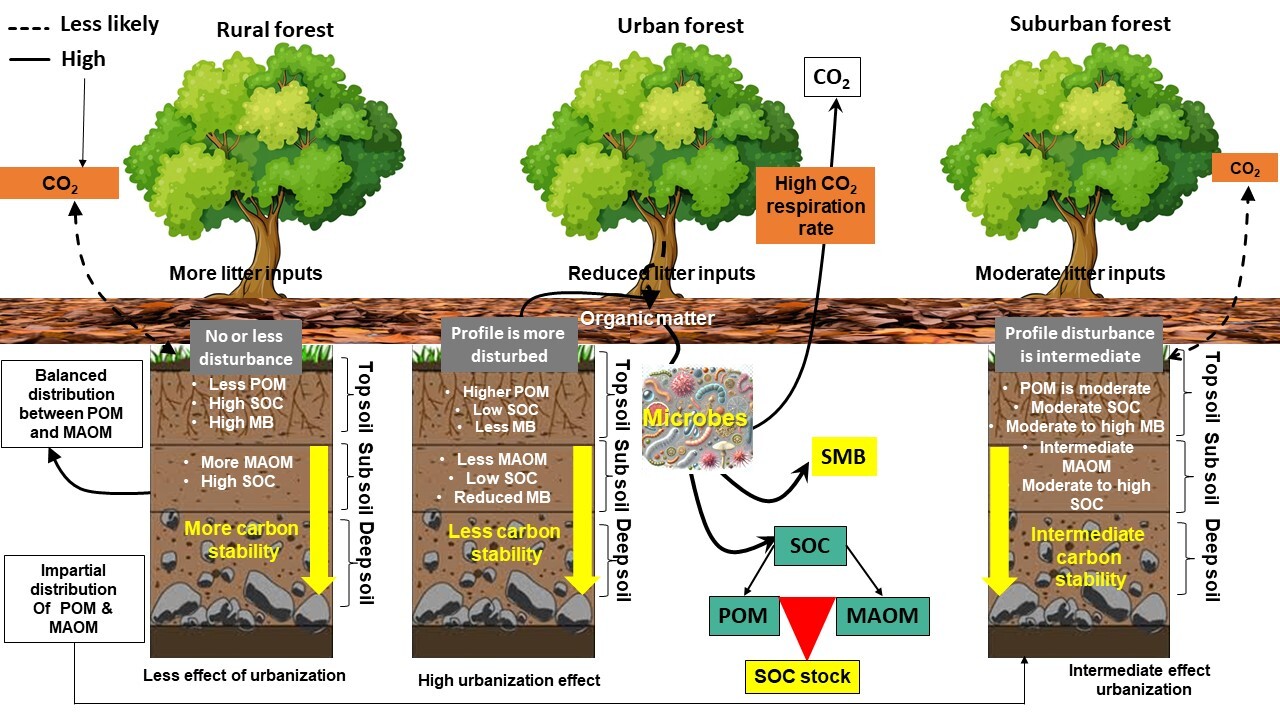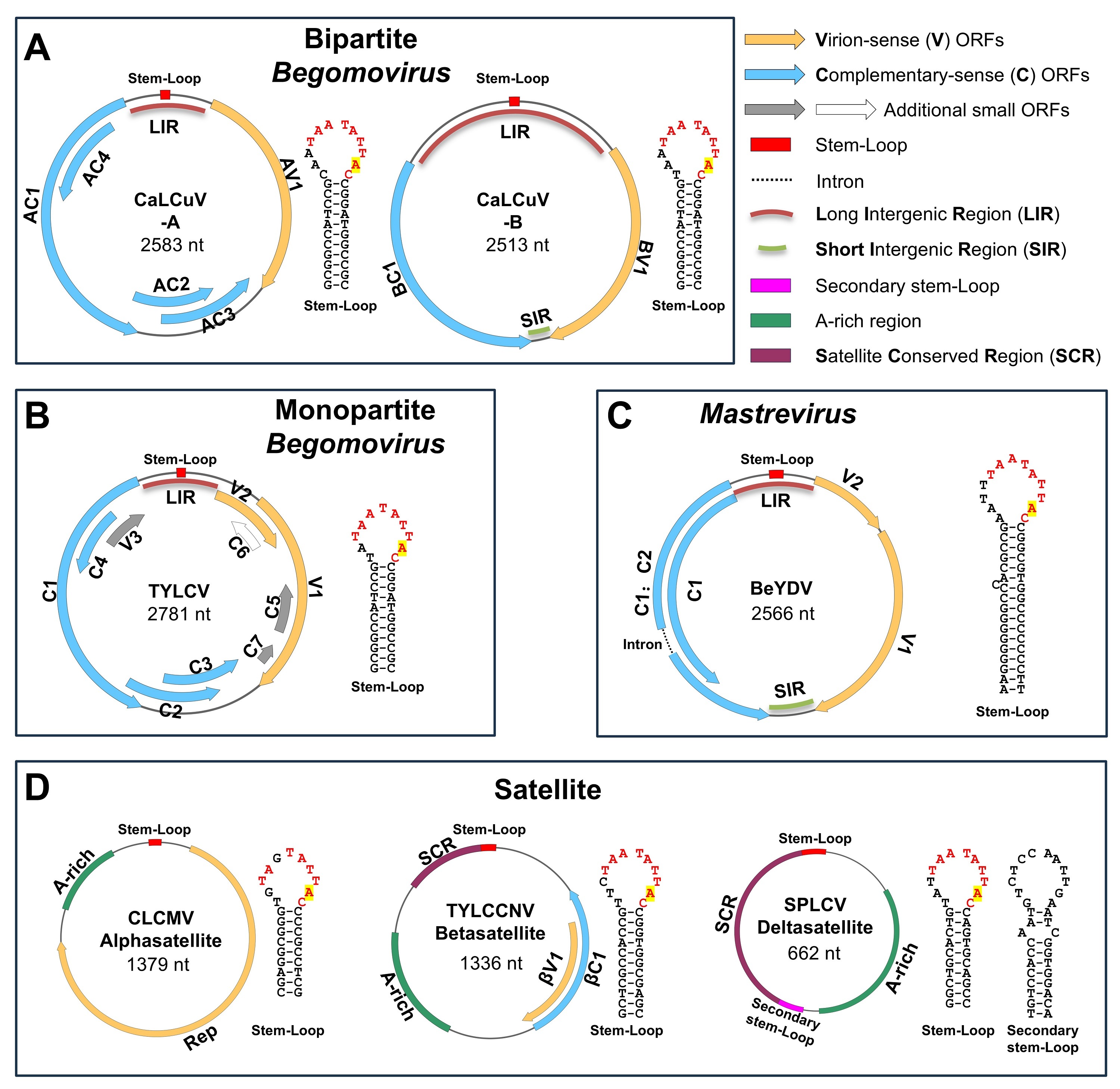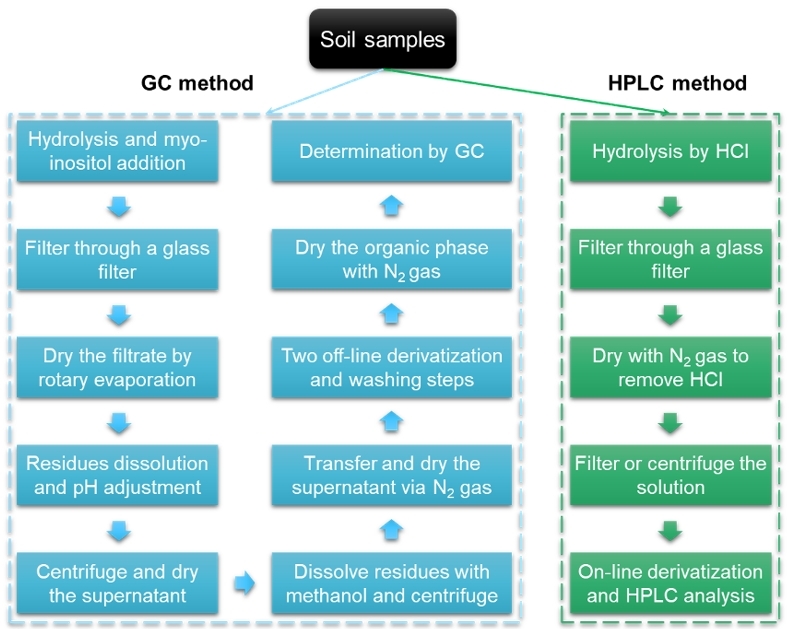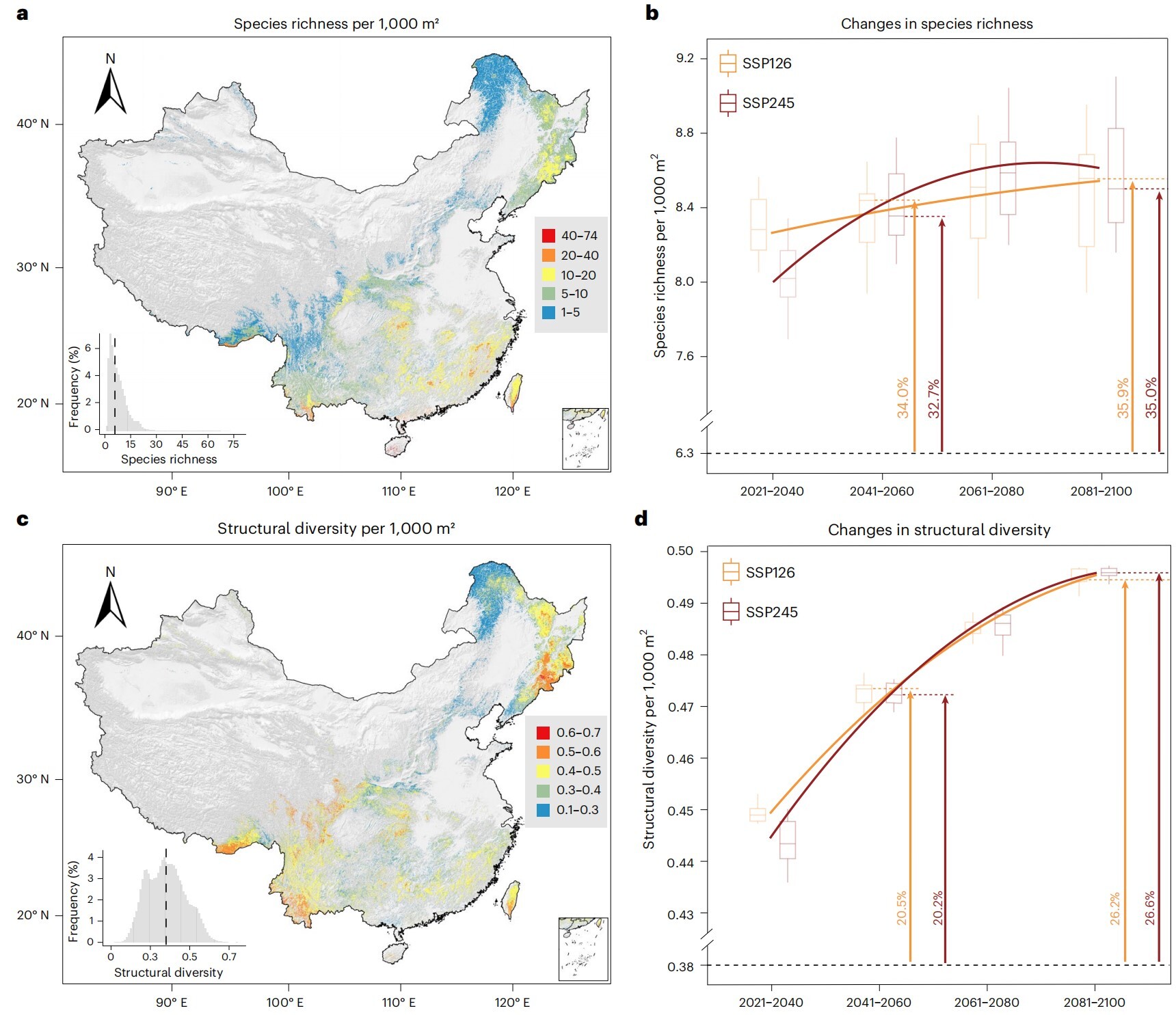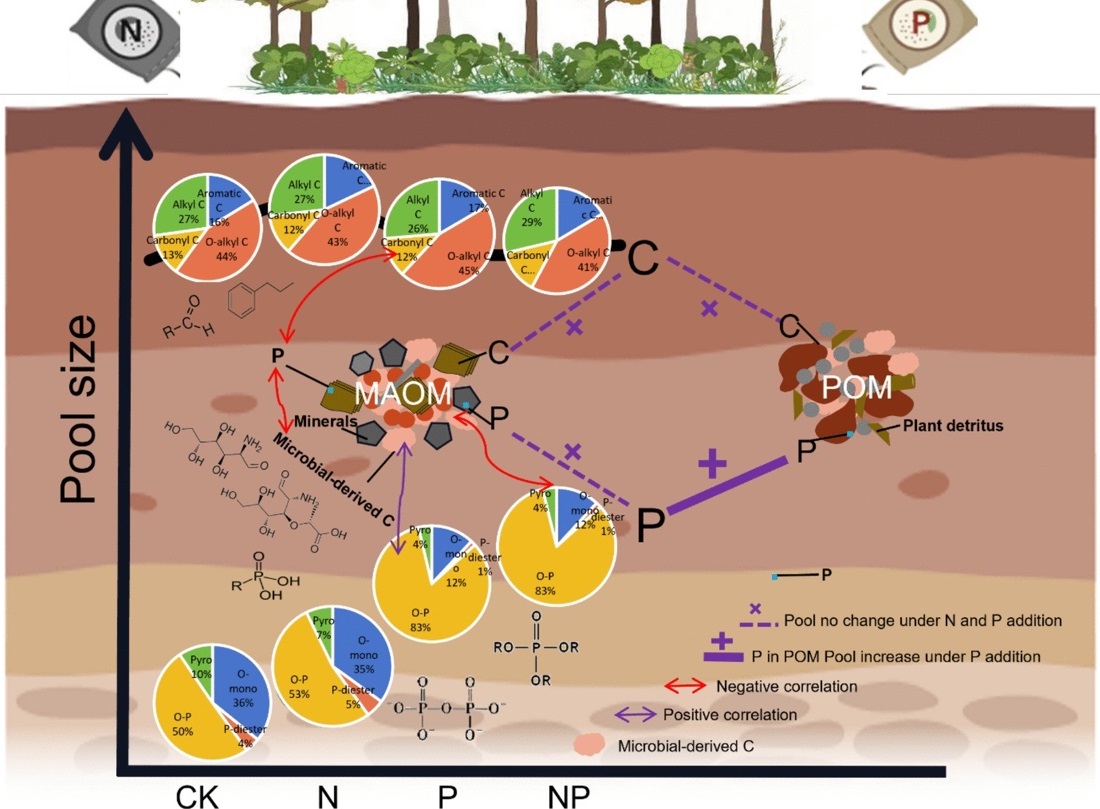News
-
2025-12-12【CCTV9】Safeguard rare slipper orchids' futureSource: GDTV、BBC Studios Source: GDTV、BBC StudiosRead More
-
2025-12-12【GDTV】How to tell a story about a flowerSource: GDTV、BBC Studios Source: GDTV、BBC StudiosRead More
-
2025-12-10Urbanization destabilizes soil organic carbon (SOC) in urban forests, threatening their long-term function as carbon sinksWe review how urbanization influences the stability of soil organic carbon (SOC) along an urban–rural forest gradients, and find that urban forest soils generally have lower SOC stability compared to suburban and rural forest soils. In urban forest, the dominant influencing factors of SOC stability are anthropogenic stressors, while the dominan... Urbanization disrupts SOC stability in forest ecosystems, weakening their vital role as carbon sinks. As cities expand and land-use intensifies, it becomes critical to understand how urban pressures disrupt the underlying mechanisms that stabilize SOC, an essential component of global climate regulation.A recent review published in Carbon Resear...Read More
-
2025-12-10SCBG Summarizes the Applications of Geminiviruses in Synthetic BiologyResearchers from the South China Botanical Garden published a review that systematically summarizes the development and core applications of geminivirus vectors from VIGS to synthetic biology. This work provides critical technical references for crop improvement and biopharmaceuticals and envisions prospects, underscoring their potential in brid... Geminiviruses, the largest plant DNA virus family, cause devastating diseases in crops worldwide. However, the specialties of geminiviruses, such as compact genomes and efficient replication machinery, make them indispensable tools in molecular biology and biotechnology. Recently, Dr. Shulin Deng’s group from the South China Botanical Garden (S...Read More
-
2025-12-10Calibrating the measurement of “Invisible carbon pool” of soils: A systematic benchmarking of methodologies cross-study synthesisThis first systematic benchmarking study provides a quantitative framework to harmonize global amino-sugar data, overcoming a key methodological barrier in synthesizing soil microbial necromass carbon measurements. We demonstrate that GC and HPLC show strong overall correlation, yet GC is more precise for C/N-rich soils while HPLC offers higher ... Comprehensive evaluation of analytical methods establishes a “common ruler” for soil carbon sequestration researchSoil represents the largest carbon reservoir in terrestrial ecosystems. A significant portion of stable soil carbon does not originate directly from plant residues but rather from microbial necromass, forming an “invisible microbi...Read More
-
2025-12-03【Xinhua News】Across China: Researchers release high-resolution maps of China's forest diversityAccording to the study, forest diversity comprises two key dimensions: tree species richness and structural diversity. Both play vital roles in supporting wildlife and enhancing carbon storage. The previous understanding of these patterns was limited by the absence of comprehensive, fine-scale forest inventory data at the national level.Read More
-
2025-11-28Researchers Unveil First High-Resolution Maps of China’s Forest Diversity PatternsUsing a spatially representative dataset of more than 300,000 trees from nearly 3,400 natural forest plots, this study provides the first comprehensive assessment of the fine-scale spatial patterns, drivers, and future potential of tree species richness and structural diversity across China’s natural forests. A research team led by the South China Botanical Garden of the Chinese Academy of Sciences, in collaboration with multiple domestic and international research institutions, has made progress in investigating forest diversity patterns across China. The findings were recently published in Nature Ecology & Evolution. Article Link: https://doi.org/1...Read More
-
2025-11-28Long-term observations reveal a new mechanism: Tropical forest soil carbon and phosphorus cycles are “drifting apart”Long-term nitrogen and phosphorus additions in a tropical coastal forest revealed a clear decoupling between soil carbon and phosphorus cycles: soil organic carbon concentrations, fractions, and chemistry remained unchanged, while phosphorus additions caused a strong accumulation of total and inorganic P—mainly within the POM fraction but not M... A research team from the South China Botanical Garden, Chinese Academy of Sciences, has recently made important progress in understanding how tropical forest soil carbon and phosphorus cycles respond to nutrient enrichment. The study shows that long-term phosphorus addition increased total soil phosphorus by more than threefold, yet did not enha...Read More
